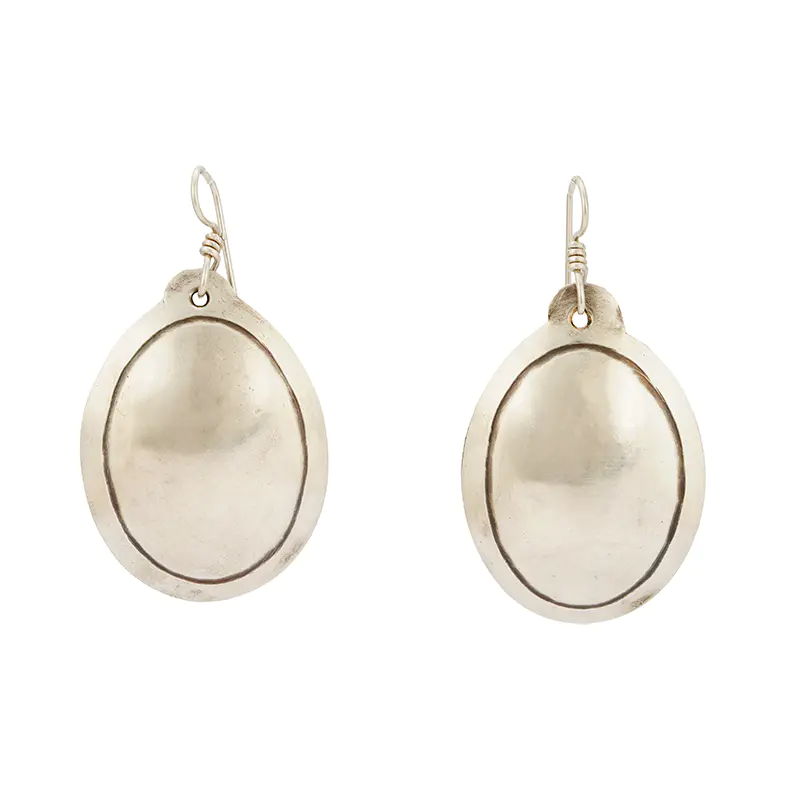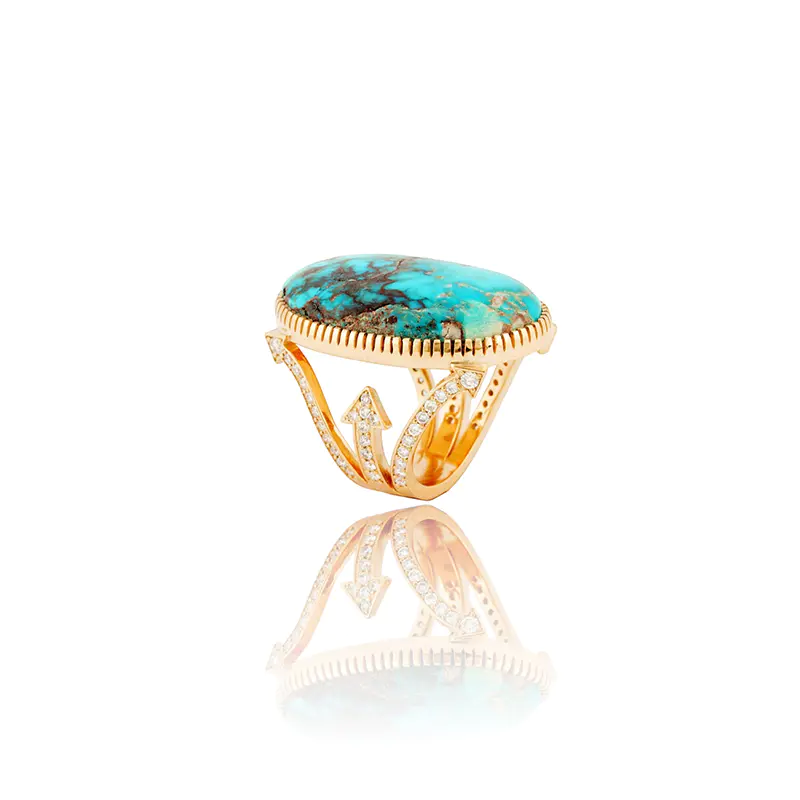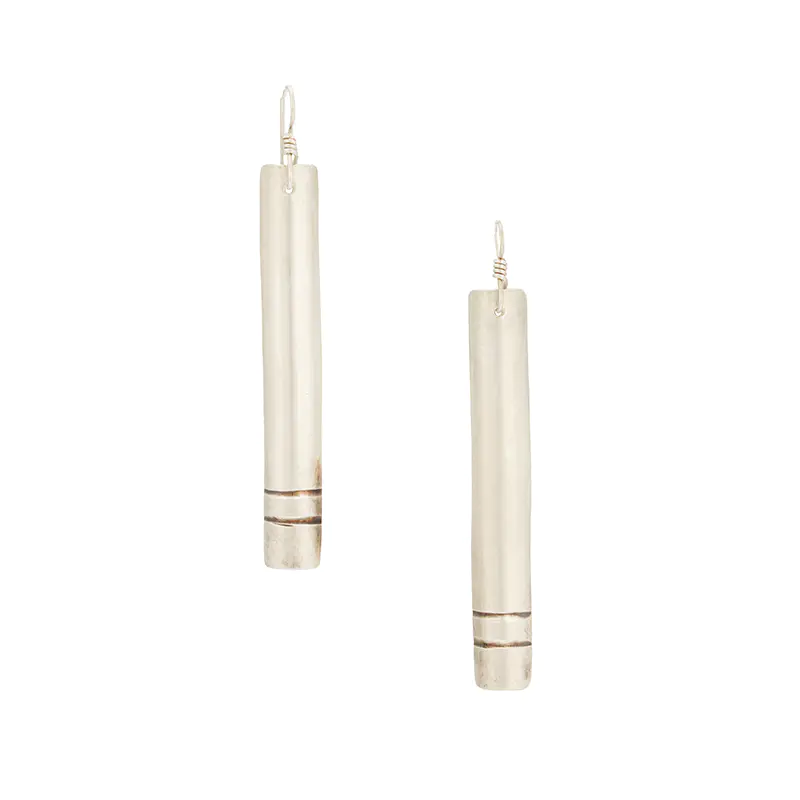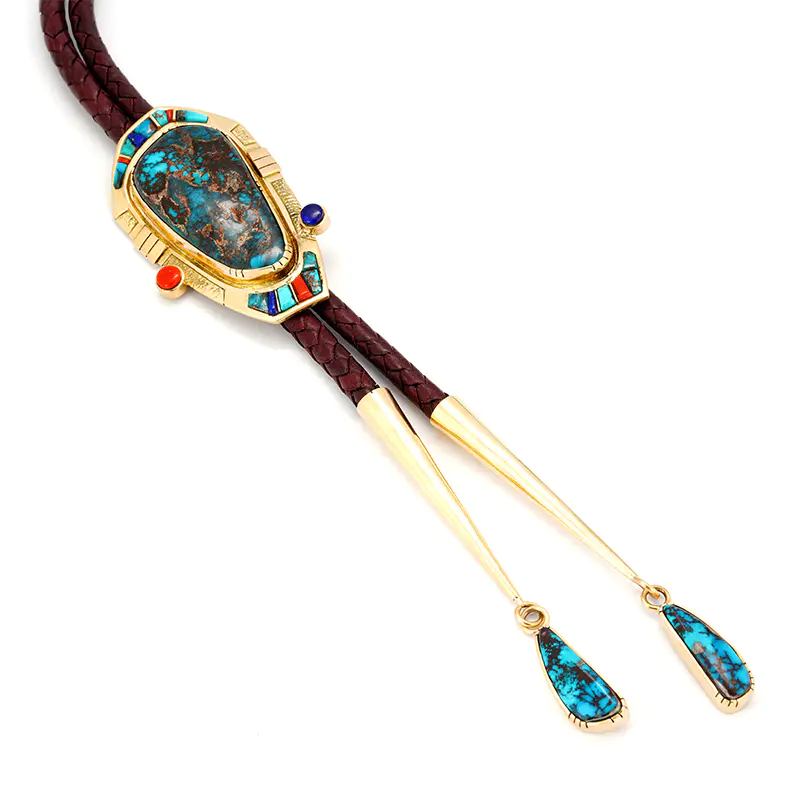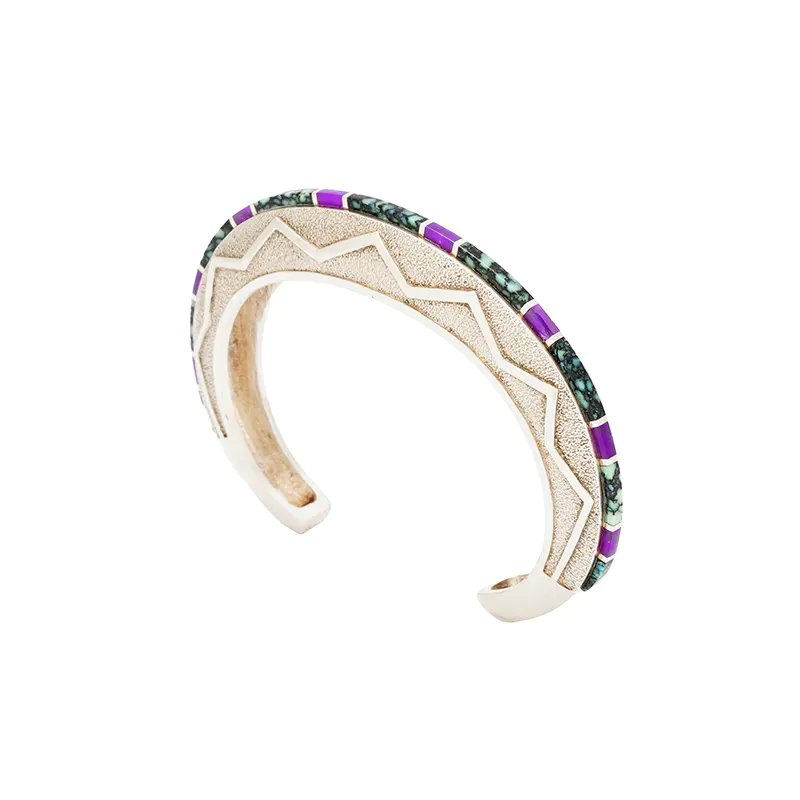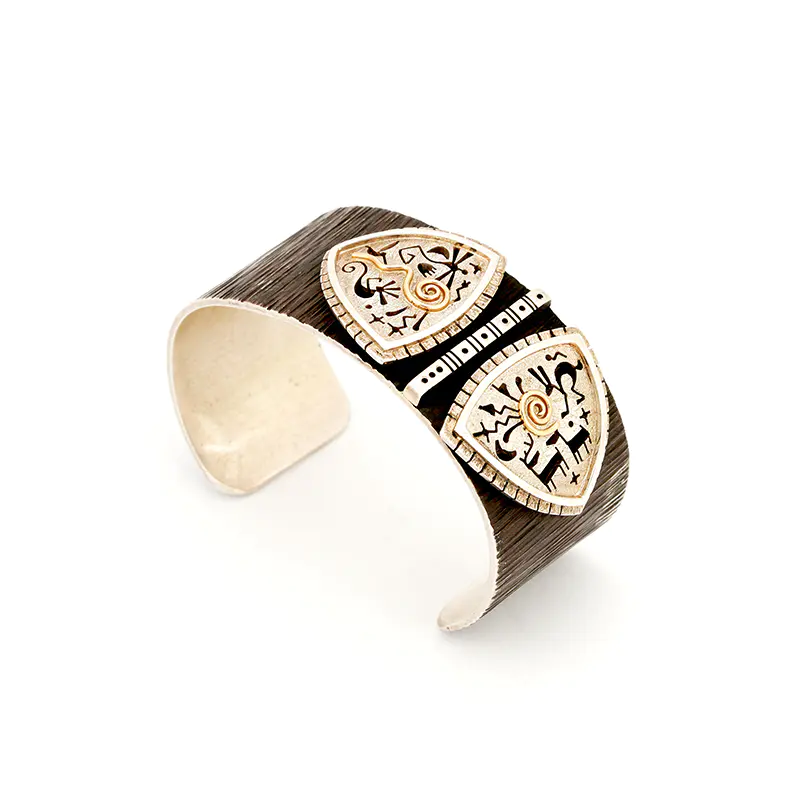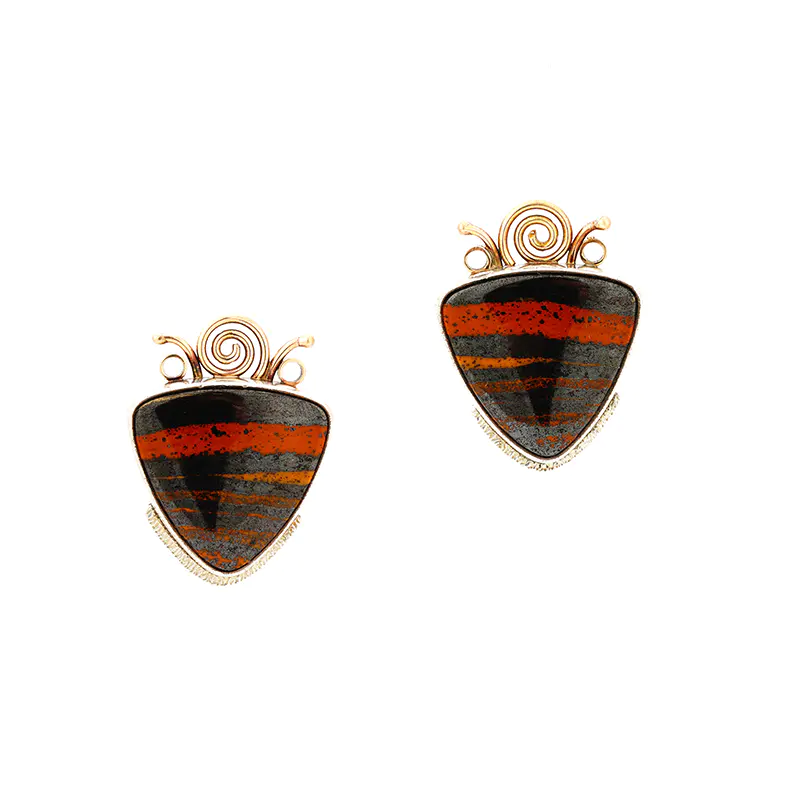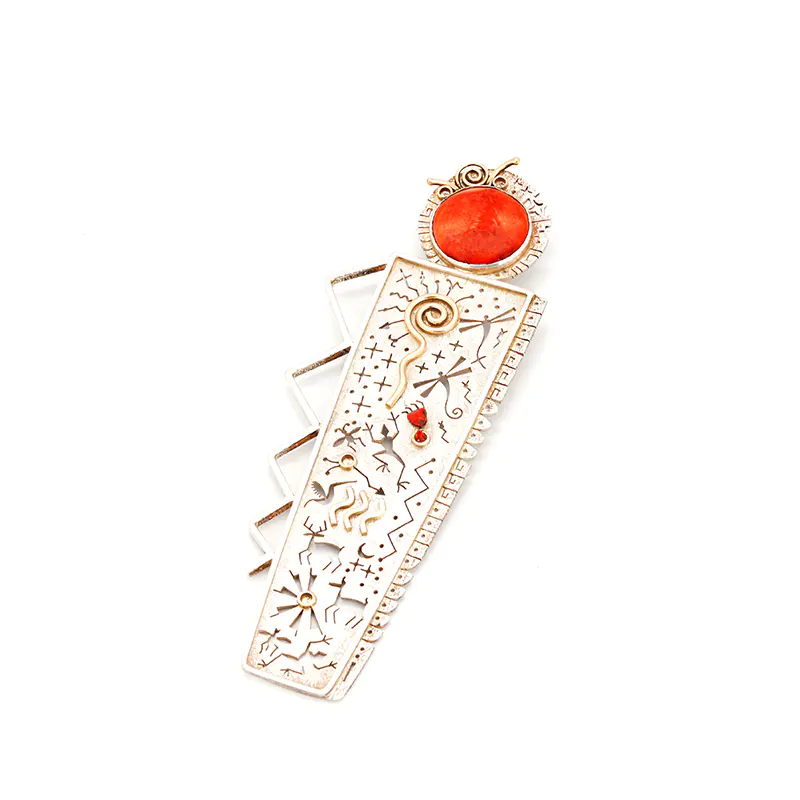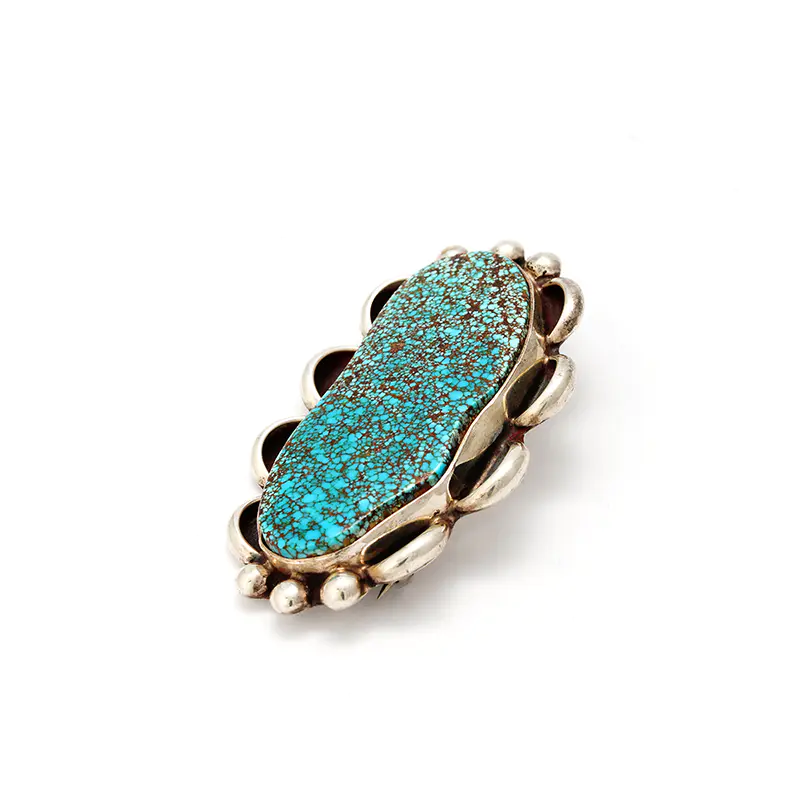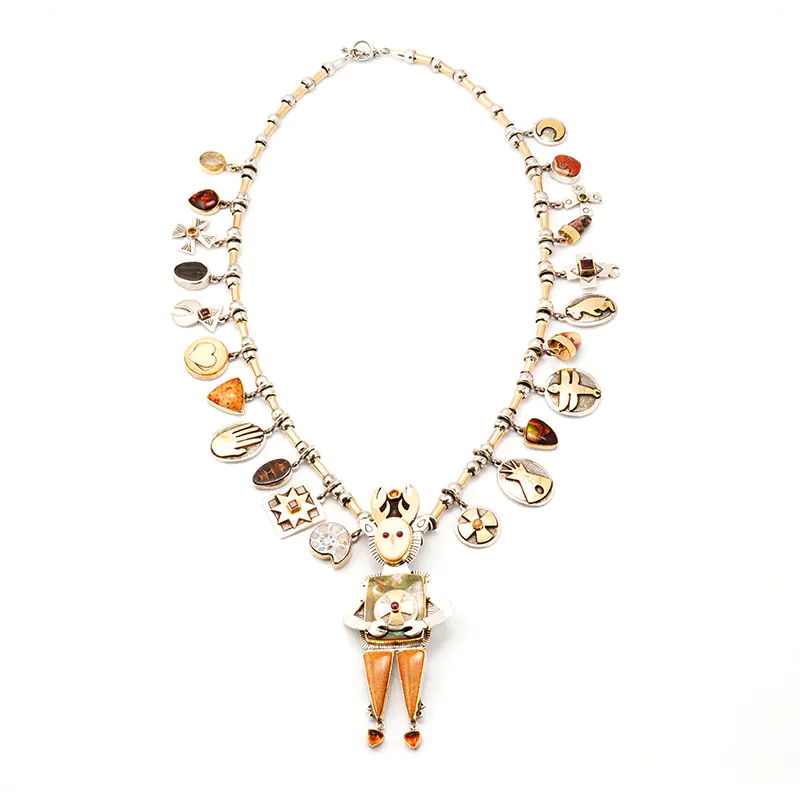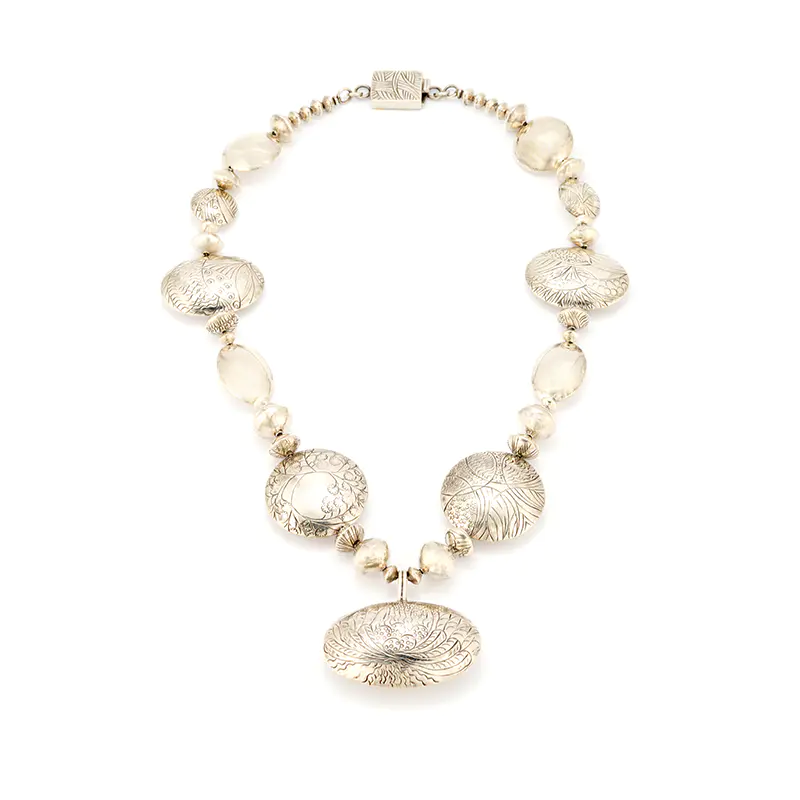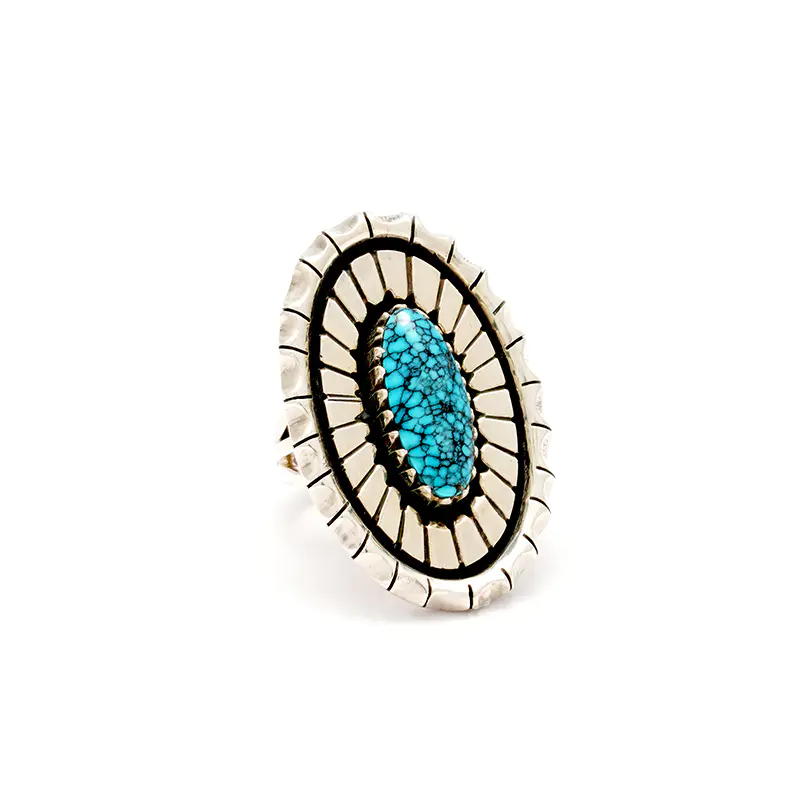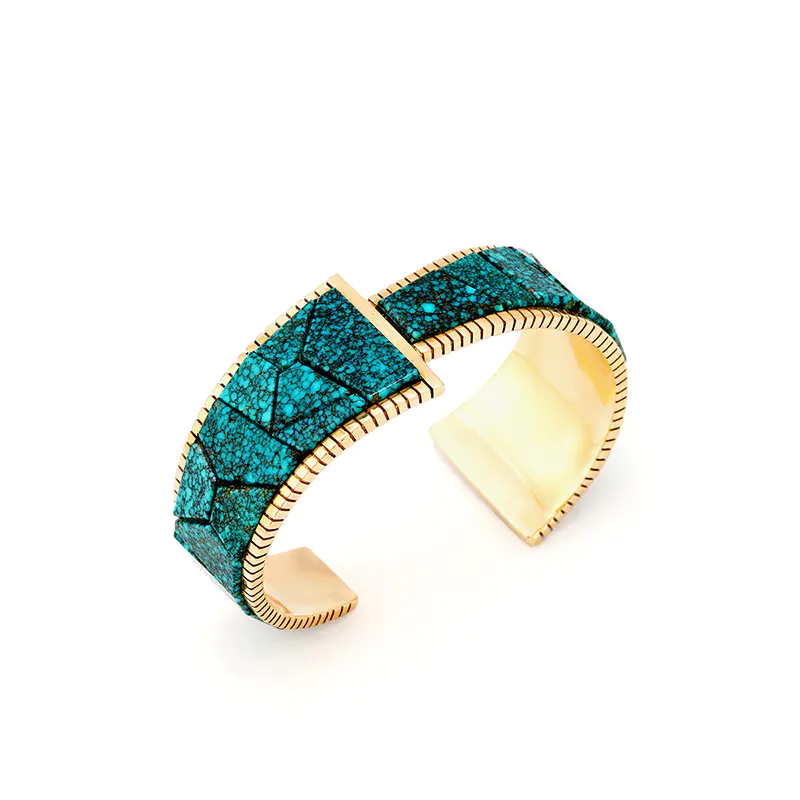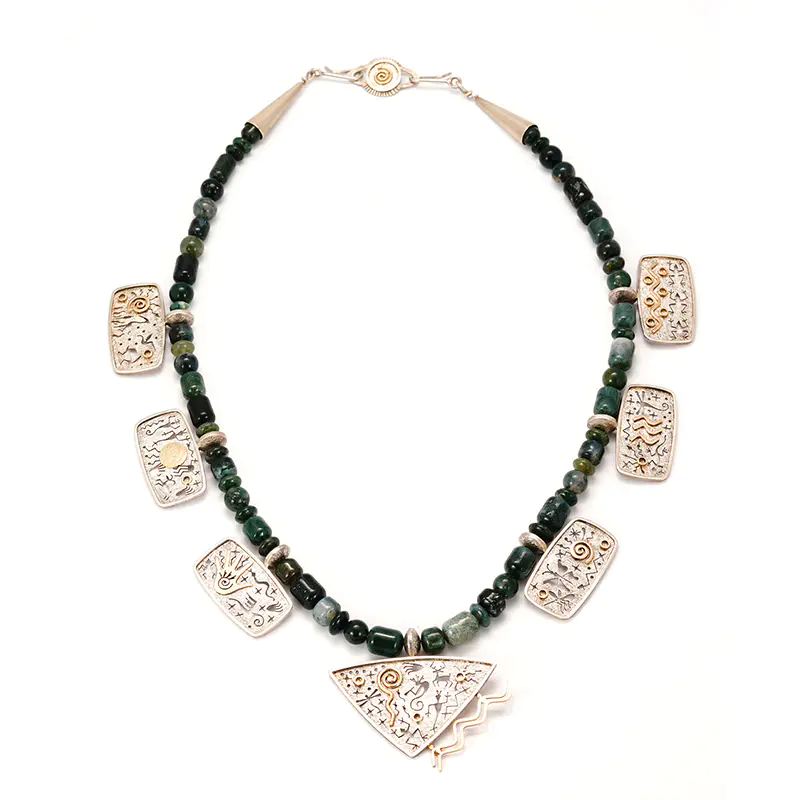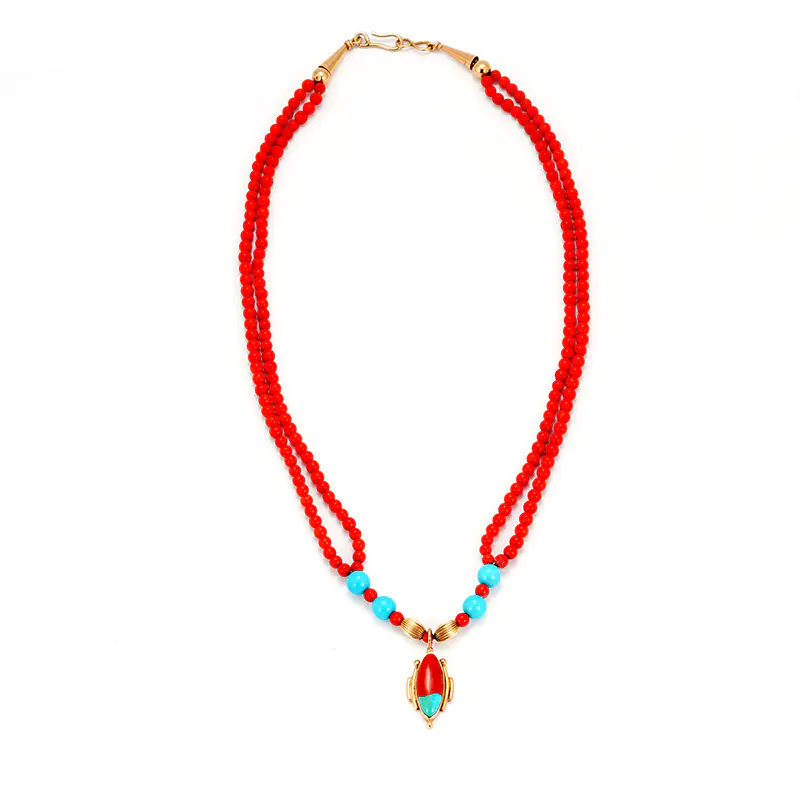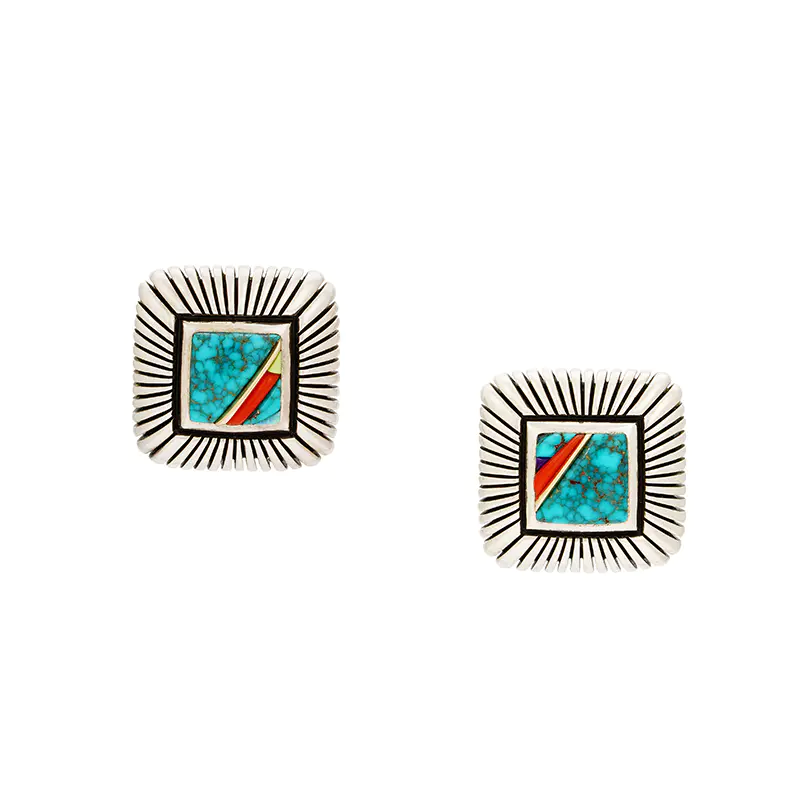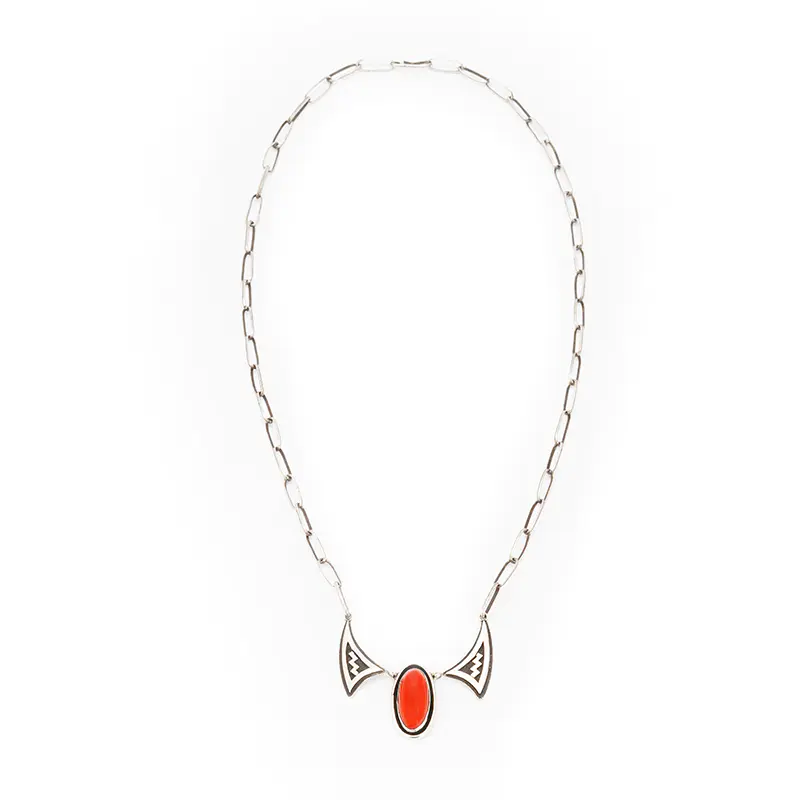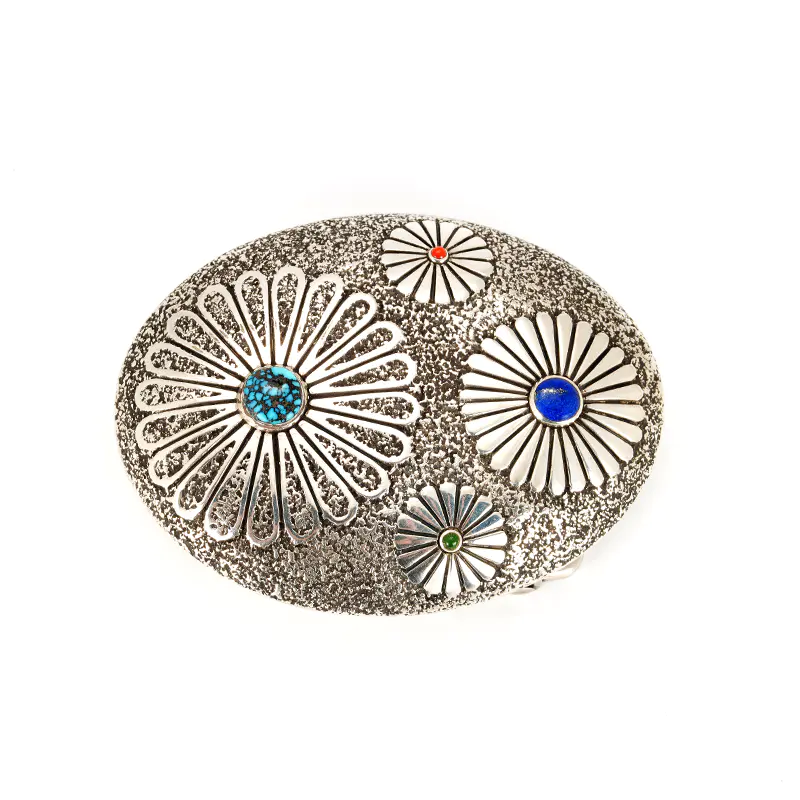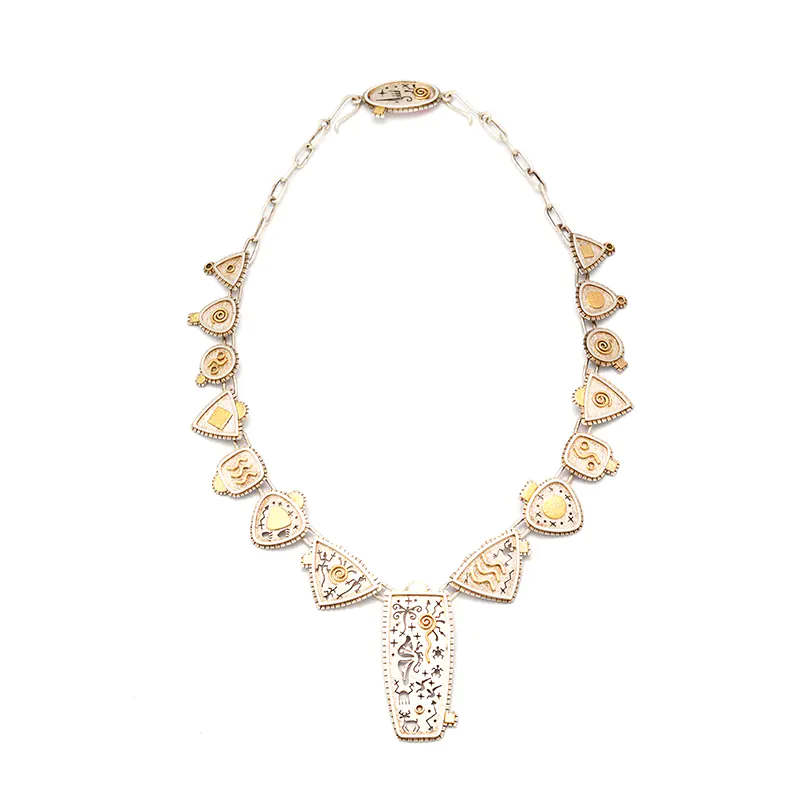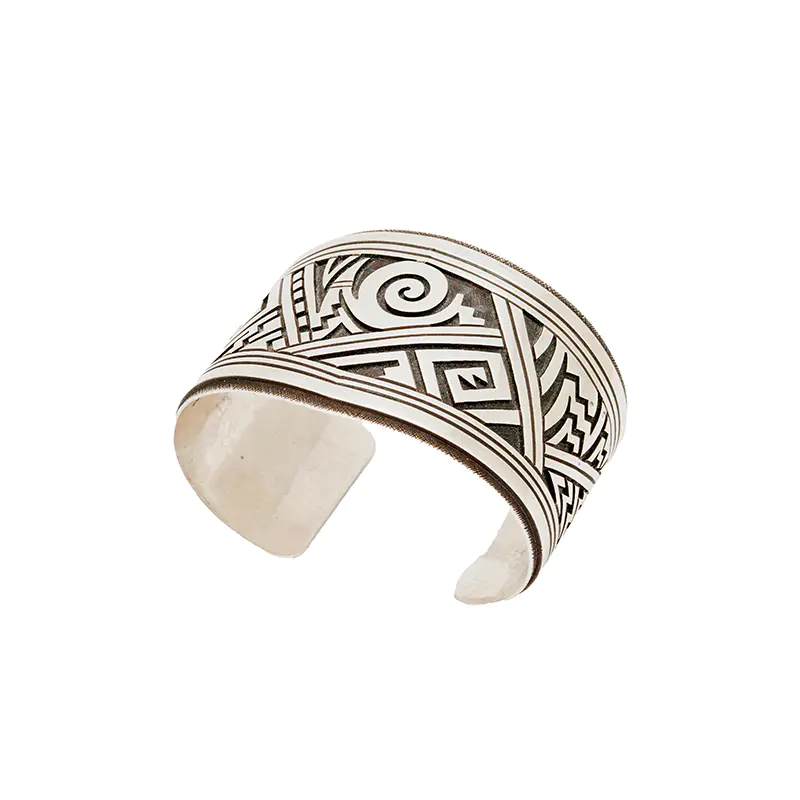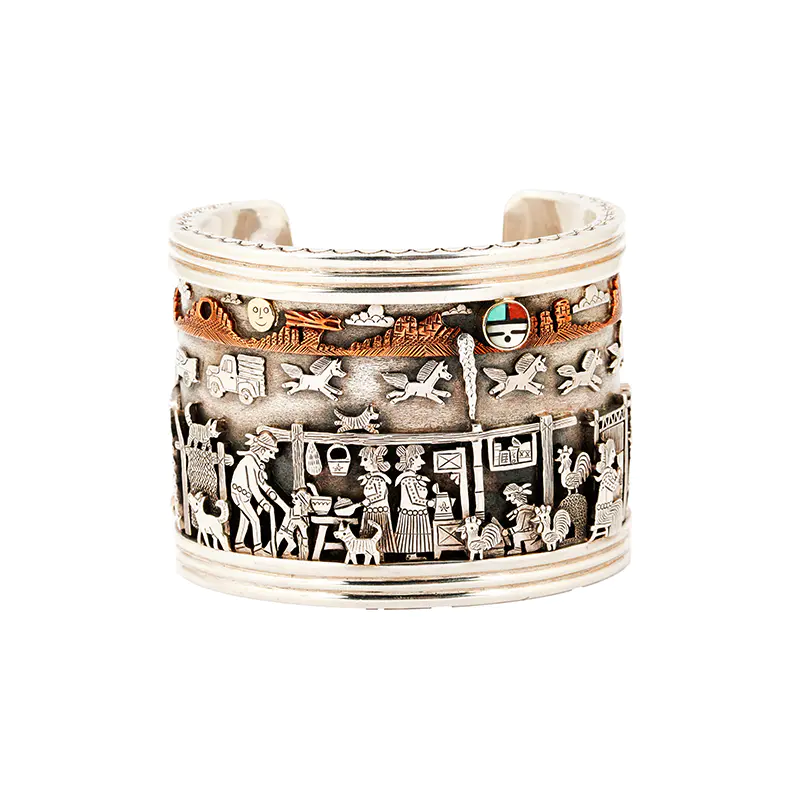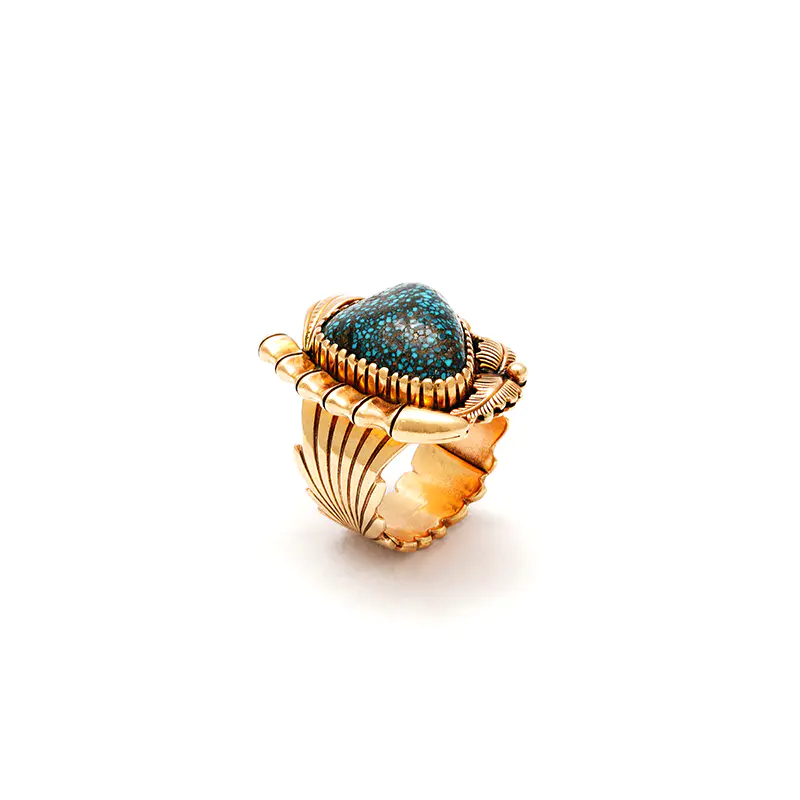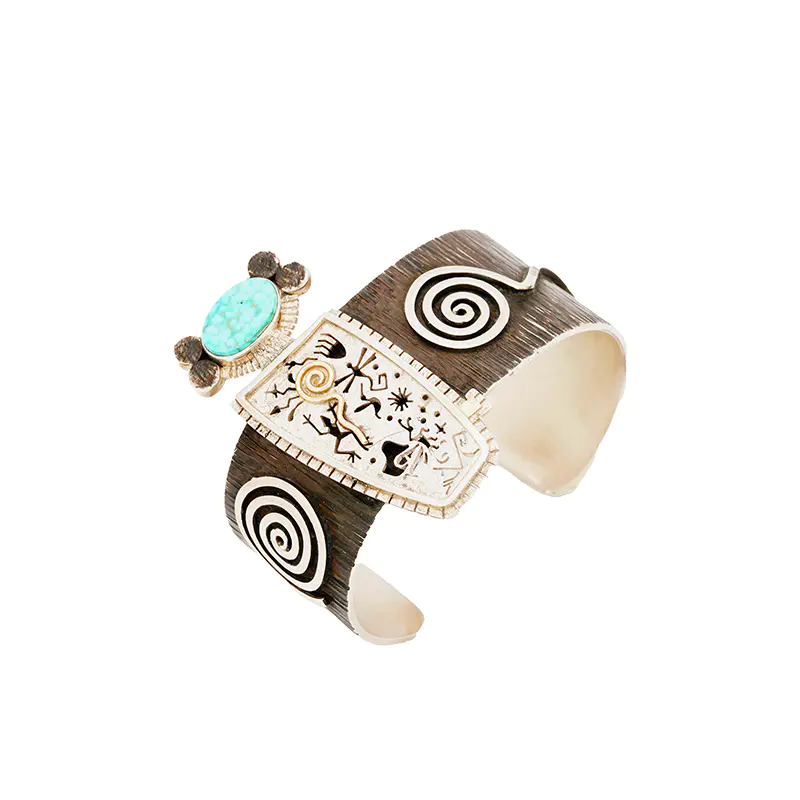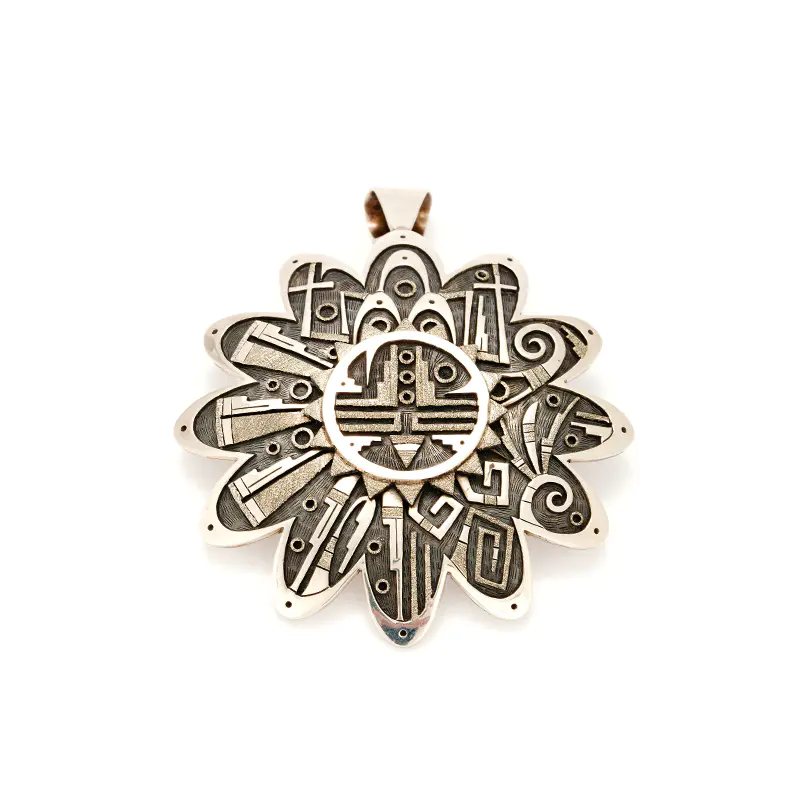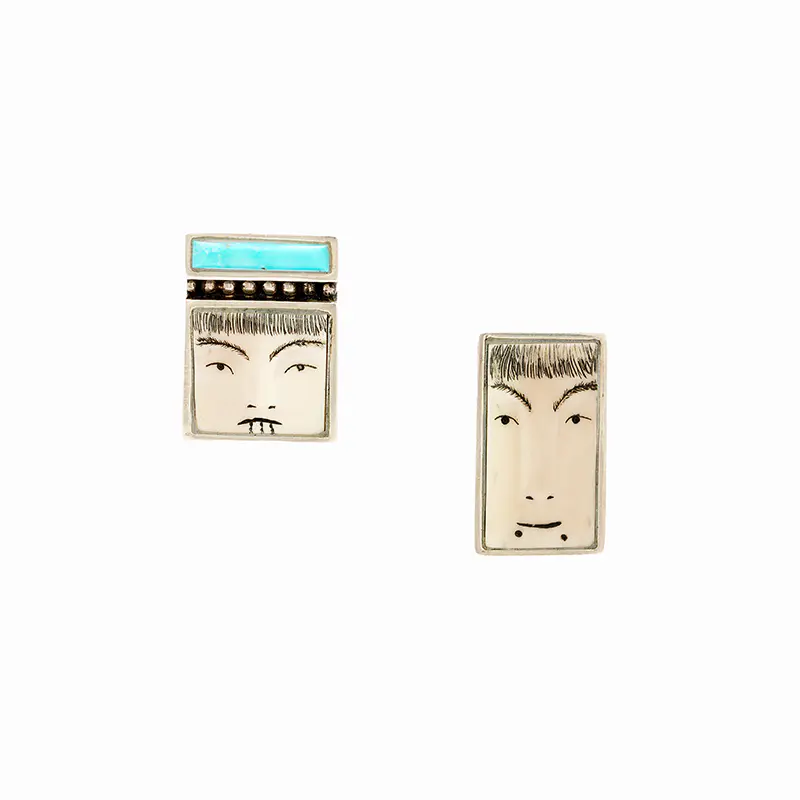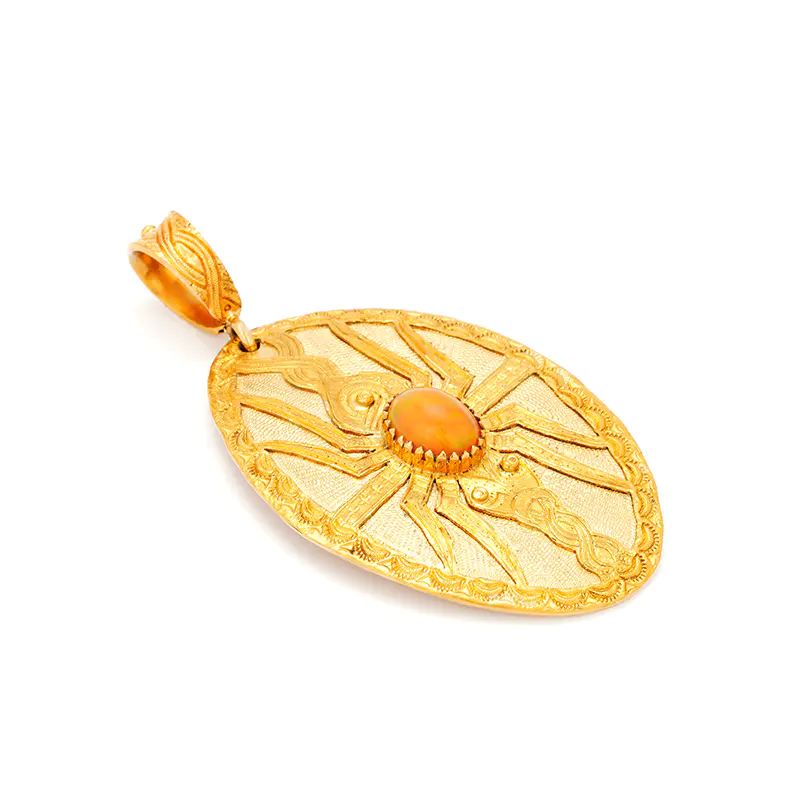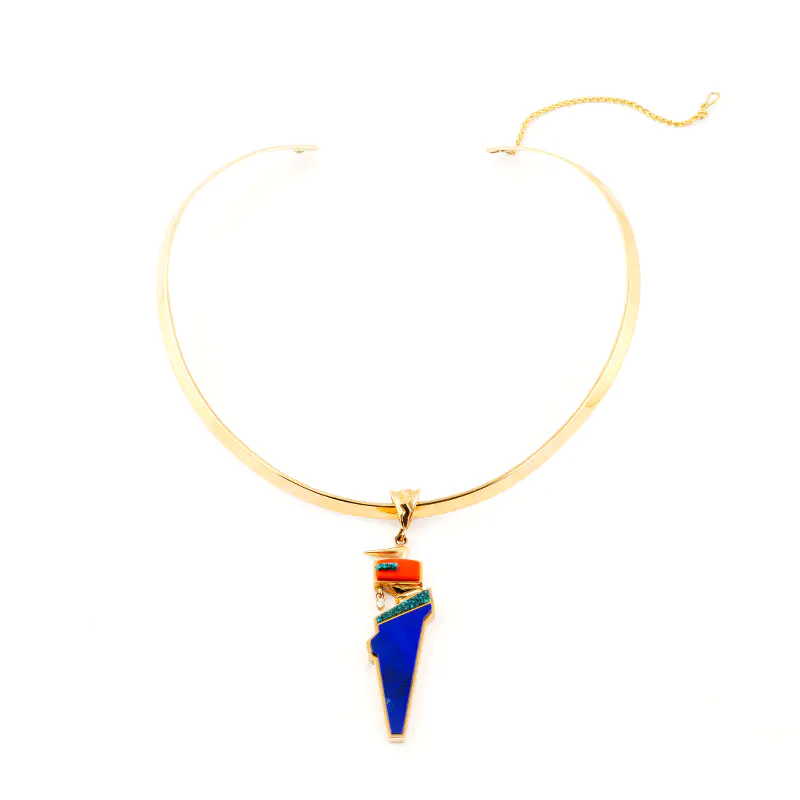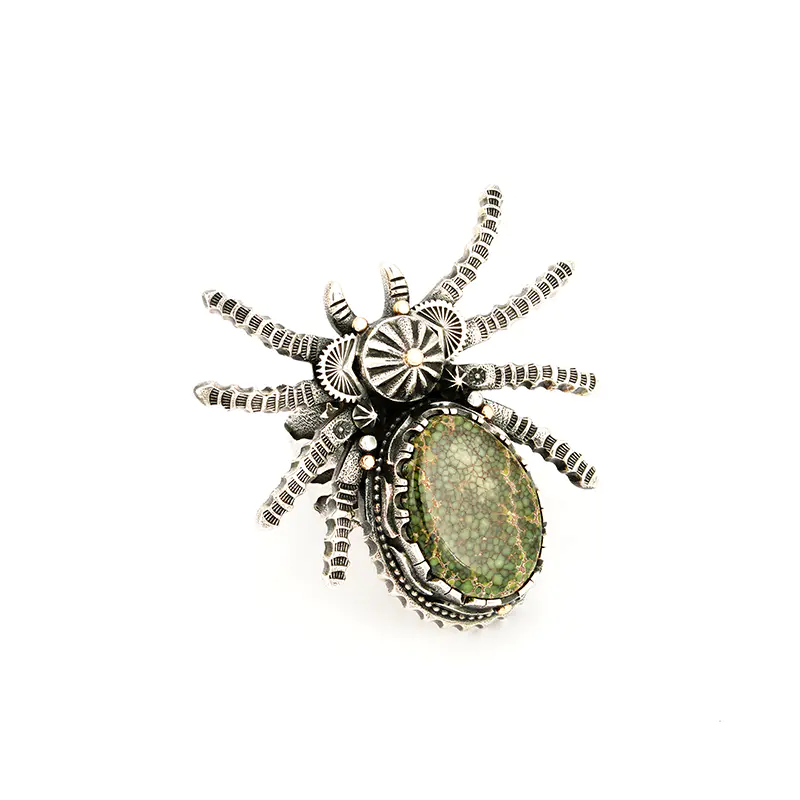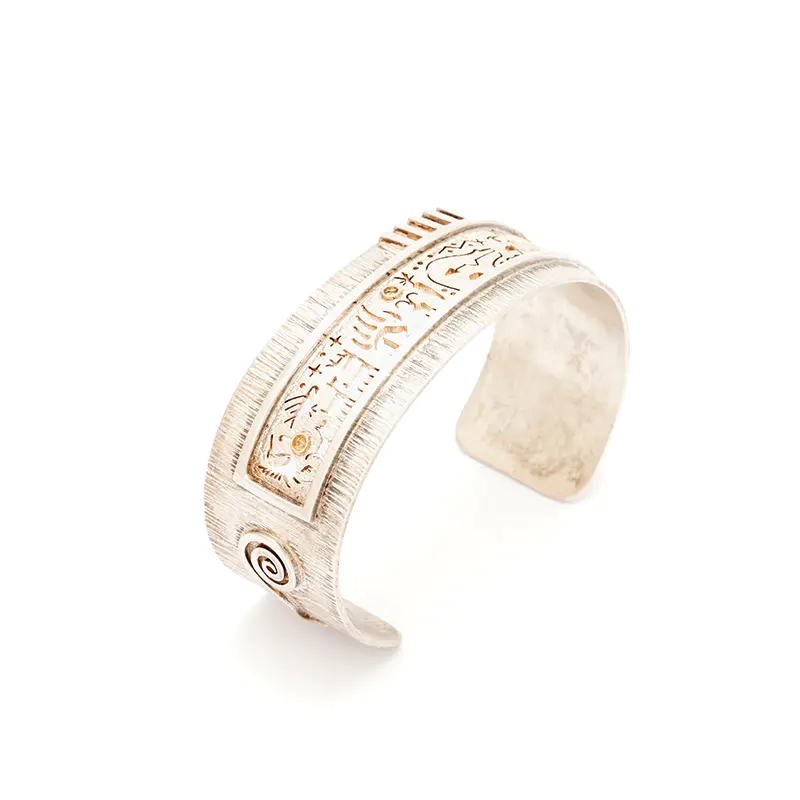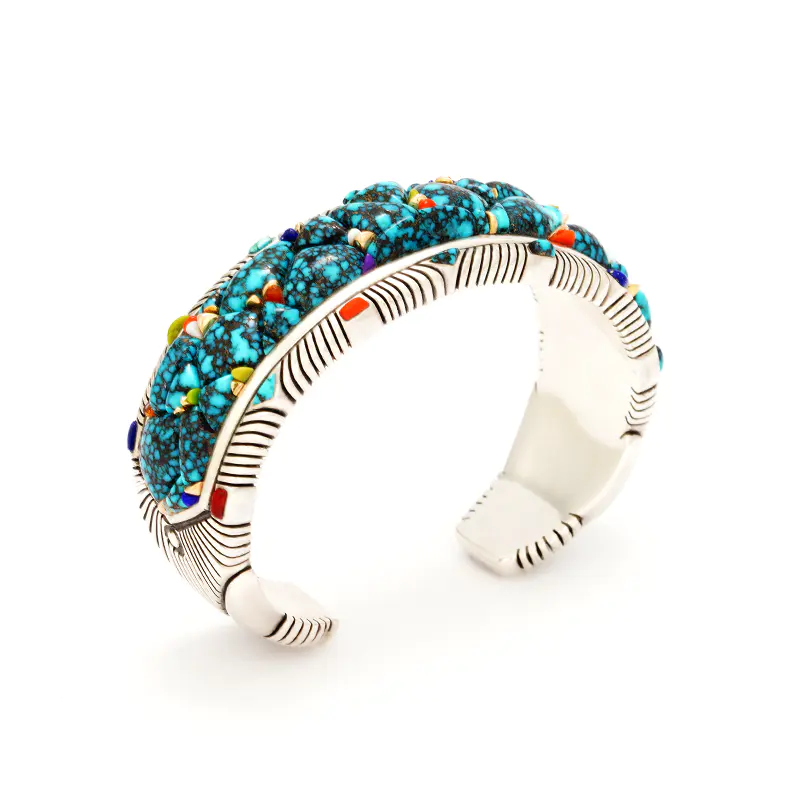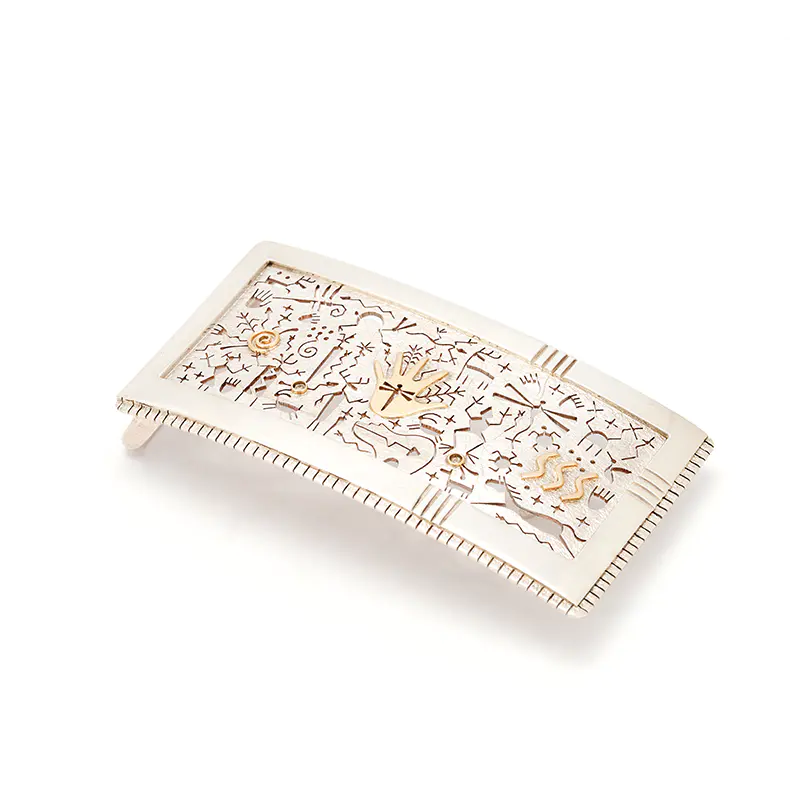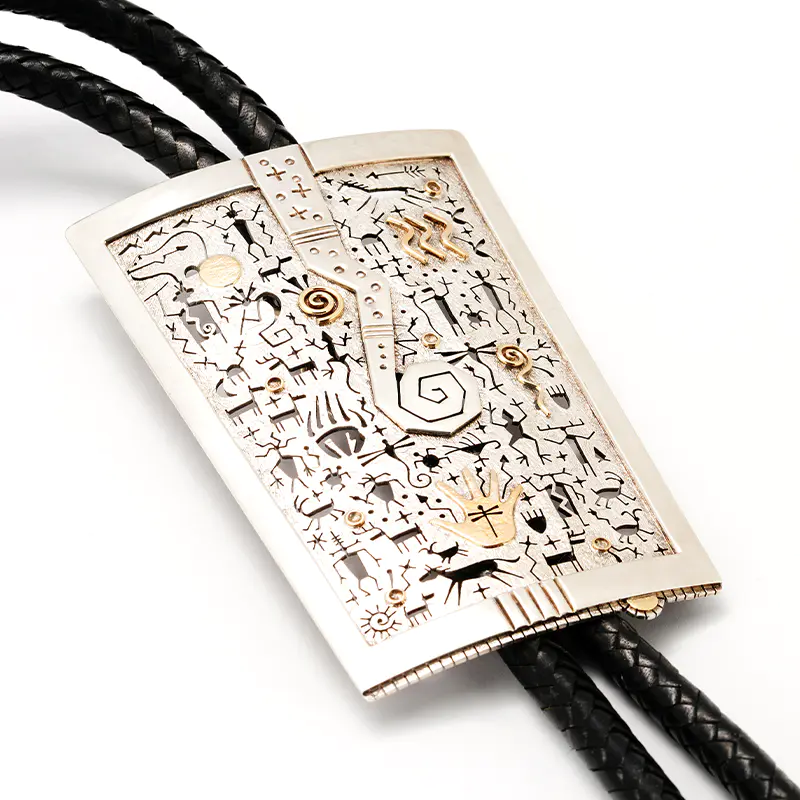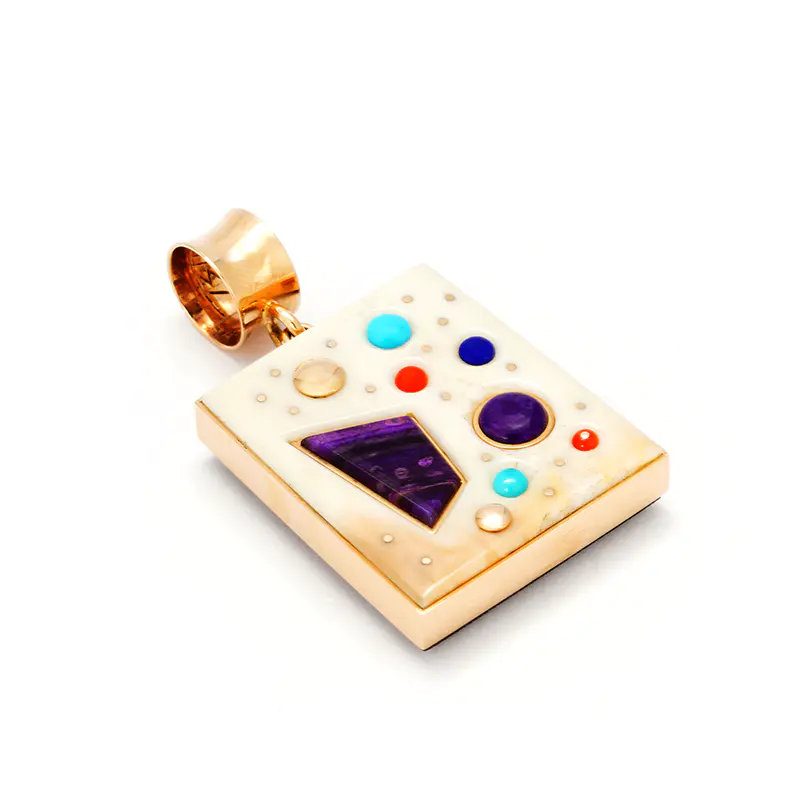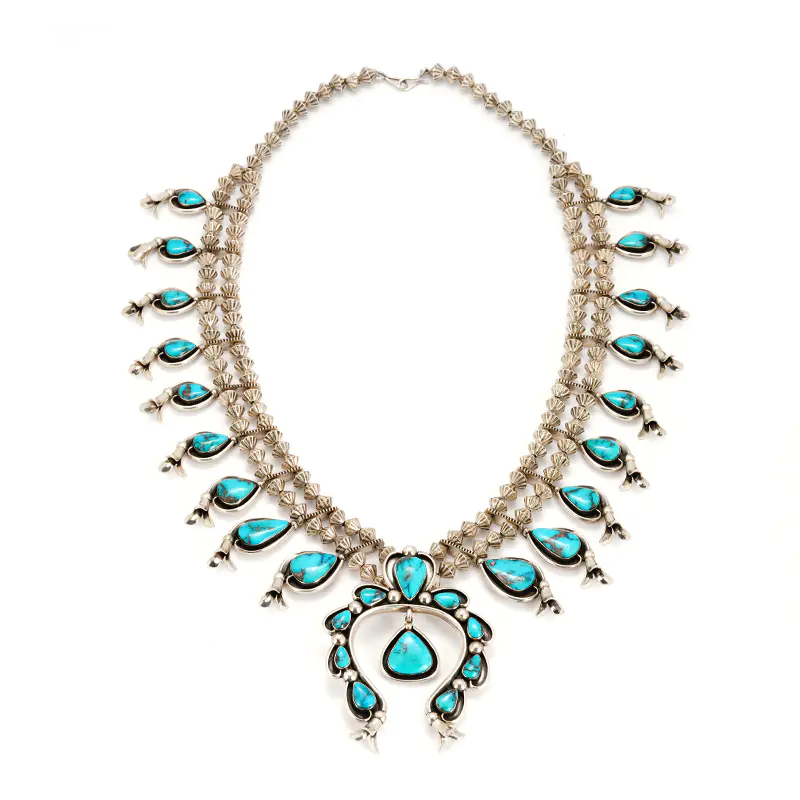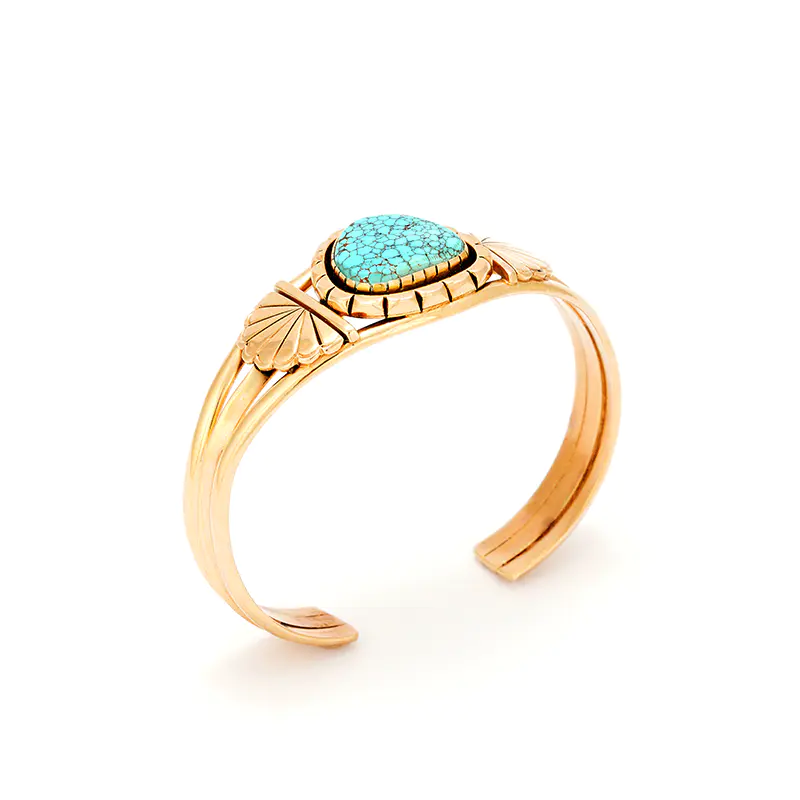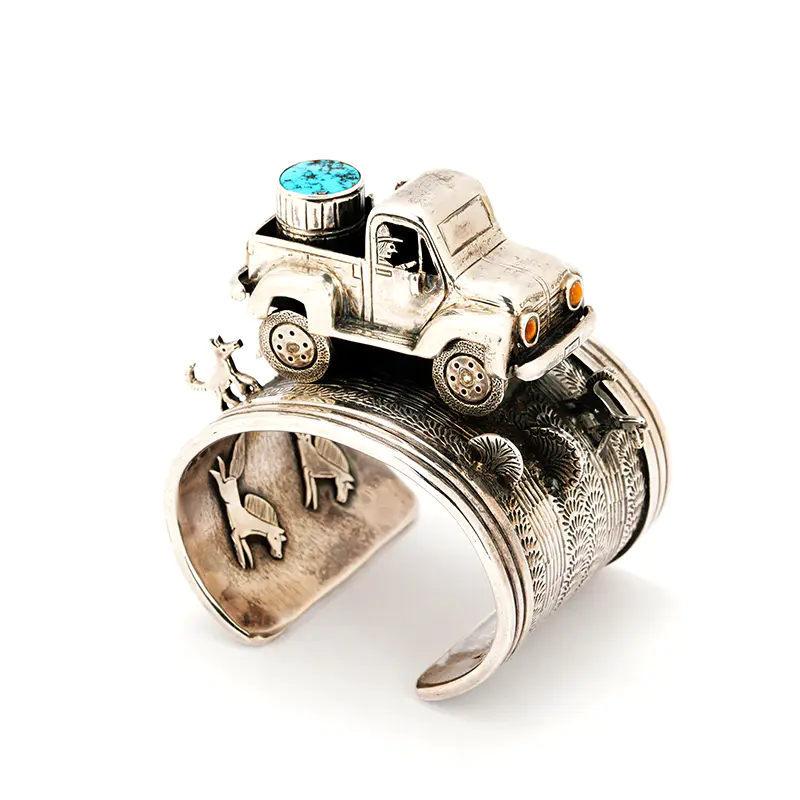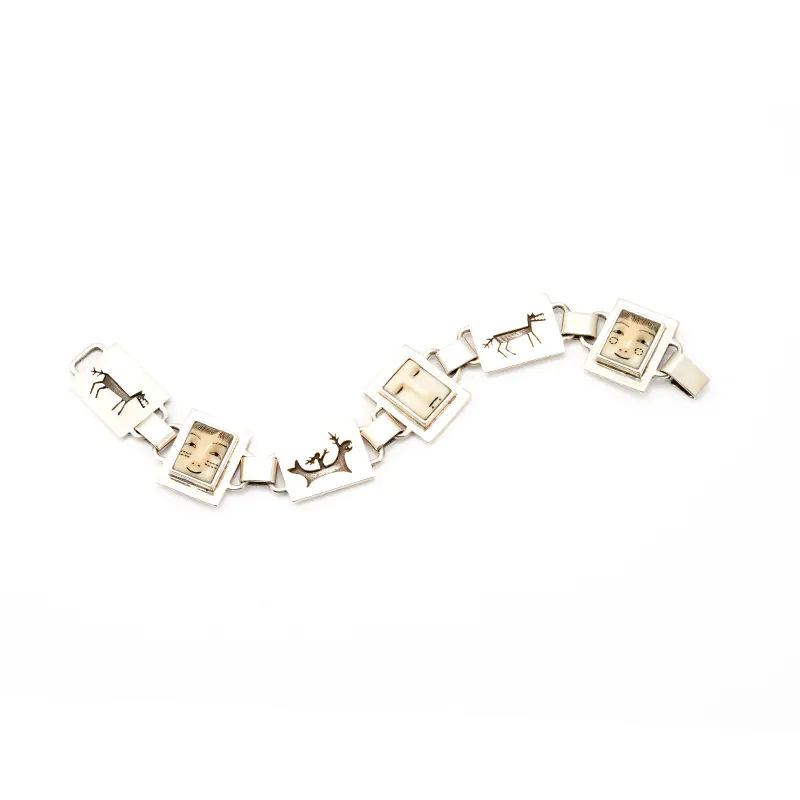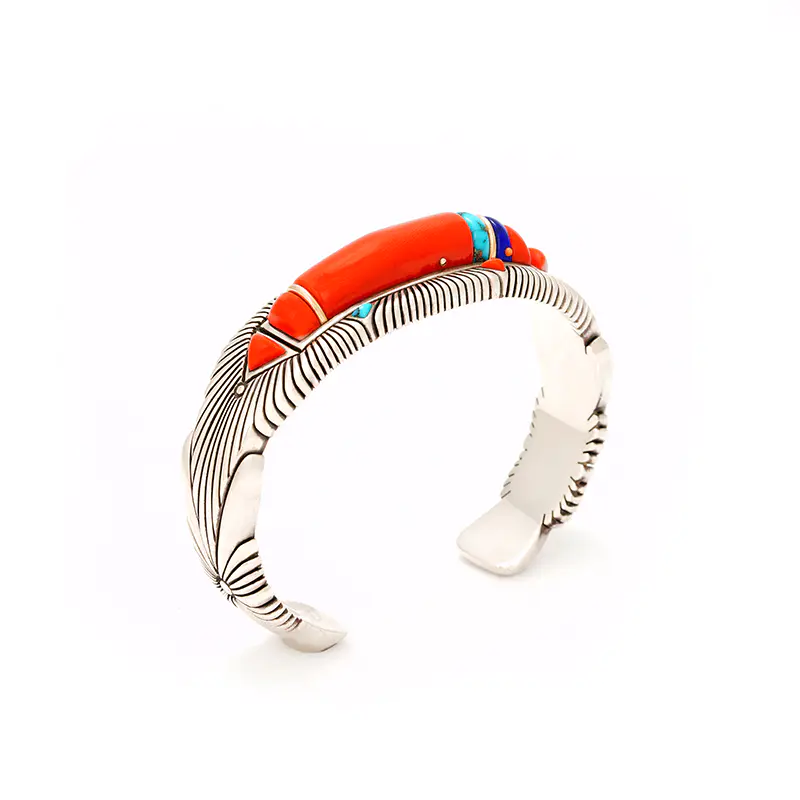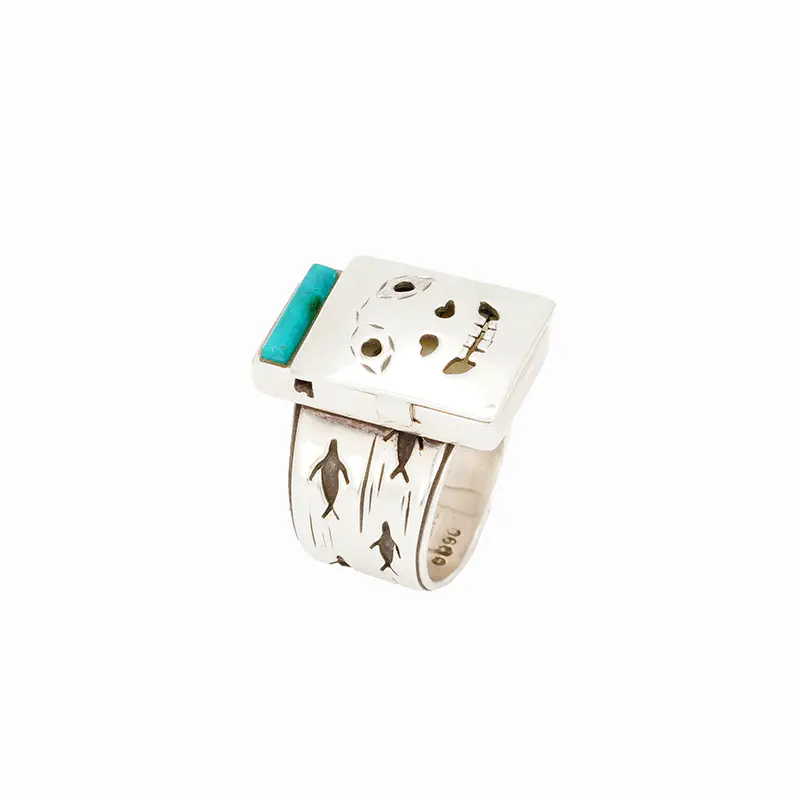Contemporary
American Indian Contemporary Jewelry: From Tradition to Visionary Art
Honoring the Legacy of Charles Loloma and the Masters Who Followed
At Faust Gallery, we honor the evolution of American Indian jewelry as one of the most dynamic and expressive art forms in the world. From ancestral adornment to avant-garde design, Native jewelry continues to evolve—rooted in tradition yet fearless in innovation. This transformation into what we now call contemporary Native jewelry was ignited by one visionary: Charles Loloma.
Charles Loloma: The Father of Contemporary Native Jewelry
A groundbreaking Hopi artist, Charles Loloma (1921–1991) redefined Native jewelry in the mid-20th century. Trained in painting and ceramics, Loloma approached jewelry as sculpture—a medium to express inner spirituality and modern Native identity. He introduced gold, wood, lapis, and exotic stones like sugilite, using raised inlay and architectural forms that broke away from conventional expectations.
His bold vision opened doors for Native jewelers to create work that was not just beautiful, but conceptual, personal, and fine art-worthy. Loloma’s legacy set the standard for contemporary Native jewelry as a genre of its own.
From Traditional Roots to Contemporary Expression
Traditional American Indian jewelry—shaped by Navajo, Zuni, and Hopi artists—relied on silverwork, hand-stamping, turquoise, and forms like squash blossom necklaces, concho belts, and cluster work. These early designs reflected spirituality, cultural symbolism, and ties to the land.
Contemporary artists honor those foundations while expanding on them. They experiment with form, material, and meaning, embracing personal identity and storytelling. The result is jewelry that is still distinctly Native—but unbound by expectations.
Contemporary Masters: Innovators Defining the Field
Raymond Yazzie (Navajo): Known for his stone-to-stone inlay, Yazzie creates vibrant, mosaic-like compositions using coral, turquoise, lapis, and sugilite. His pieces are among the most technically advanced and visually stunning in contemporary Native art.
Jesse Monongya (Navajo): Fusing the celestial with the spiritual, Monongya uses sugilite, opal, lapis, and fossilized ivory to craft intricate inlay designs that reflect Native cosmology and personal vision.
James Little (Navajo): With elegant restraint and precise silversmithing, Little creates modernist forms rooted in traditional technique. His minimalist style reflects balance, clarity, and craftsmanship.
Charles Supplee (Hopi): Supplee is known for his refined overlay work, dynamic shapes, and combination of gold, silver, and high-grade stones. His pieces carry cultural significance while maintaining a sleek, contemporary look.
Larry Golsh (Pala Mission): A master of lapidary and goldsmithing, Golsh’s clean, architectural designs often feature precision-cut stones and minimal forms. His work reflects both Native values and modernist influences.
Verma Nequatewa (Sonwai) (Hopi): As the niece and artistic heir of Charles Loloma, Sonwai continues his legacy through extraordinary gold and inlay work. Her jewelry radiates elegance and harmony, crafted with the highest level of detail and color balance.
Ric Charlie (Navajo): Widely regarded as a master of tufa cast jewelry, Ric Charlie transforms molten silver into finely textured, deeply sculptural works. His use of tufa stone molds, intricate surface design, and patina finishes makes his work unmistakable. Ric’s pieces are not only technical marvels—they carry a strong cultural and visual narrative, merging ancient casting traditions with contemporary aesthetics.
Other contemporary trailblazers—such as Edison Cummings, Don Lucas, Cippy CrazyHorse, and many more—continue to expand the boundaries of Native jewelry, each offering their own distinct voice and vision.
Contemporary Jewelry Today: A Living, Breathing Art Form
Today, American Indian contemporary jewelry exists at the cutting edge of fine art and cultural storytelling. Artists draw from tradition but speak through personal experience, innovative form, and material mastery—using everything from turquoise and coral to gold, sugilite, and fossilized ivory.
These pieces are more than adornment—they are sculptures for the body, cultural affirmations, and reflections of living heritage.
At Faust Gallery, we are proud to represent both the pioneers and the present-day masters of American Indian contemporary jewelry. From the revolutionary vision of Charles Loloma to the refined brilliance of artists like Raymond Yazzie, Jesse Monongya, Charles Supplee, Larry Golsh, and Ric Charlie, our collection tells a story of resilience, innovation, and timeless beauty.
-

Monongye, Bo 14K Gold Dimaond Ring With Turquoise
$7,200.00 Add to cart -

Monongye, Bo 14K Gold Morenci And Diamond Ring
$7,500.00 Add to cart -

Faks, James Sterling Silver Oval Earrings
$160.00 Add to cart -

Monongye, Bo 14K Gold Turquoise And Diamond Ring
$7,650.00 Add to cart -

Monongye, Bo Sterling Silver and Gold Necklace With Turquoise
$14,000.00 Add to cart -

Faks, James Sterling Silver Rectangle Earrings
$160.00 Add to cart -

Willie, Wes 18K Gold Inlaid Large Bisbee Stone Bolo Tie
$34,000.00 Add to cart -

Supplee, Charles Sterling Silver New Lander and Sugilite Bracelet
$3,600.00 Add to cart -

Supplee, Don Longhair Kachina Sterling Silver Inlaid Bolo Tie
$5,700.00 Add to cart -

Panteah, Myron Sterling Silver Bracelet
$2,800.00 Add to cart -

Panteah, Myron Bee Stud Earrings
$900.00 Add to cart -

Panteah, Myron Spiny Oyster Shell ZigZag Pendant
$2,800.00 Add to cart -

Lone Mountain Turquoise Sterling Silver Pin/Pendant
$2,800.00 Add to cart -

Adams, Victoria Figure Charm Necklace
$17,500.00 Add to cart -

Loretto, Phil Sterling Silver Necklace
$3,750.00 Add to cart -

Benally, Kee Joe Black Web #8 Turquoise Ring
$3,500.00 Add to cart -

Johnson, Don Juan Of New Mexico 14K Gold Gem-Quality Lone Mountain Turquoise Bracelet
Read more -

Yazzie, Raymond Sterling Silver Rings With Lone Mountain Turquoise
$5,000.00 Add to cart -

Panteah, Myron Necklace With Stones
$9,800.00 Add to cart -

Poblano, Veronica Gold and Coral Turquoise Necklace
$3,500.00 Add to cart -

Yazzie, Raymond Sterling Silver Inlaid Earrings
Read more -

Kabotie, Michael Sterling Silver Chain Necklace With Coral
$6,750.00 Add to cart -

Yazzie, Lee Sterling Silver Flower Buckle
$5,000.00 Add to cart -

Claw, Monte 14K Gold Tufa Cast Naja Pendant With Lander Blue Turquoise Nuggest
$4,800.00 Add to cart -

Panteah, Myron Multi-Shape Necklace
$7,500.00 Add to cart -

Kabotie, Michael Sterling Silver Hopi Overlay Bracelet
$12,000.00 Add to cart -

Lee, Clarence and Russell Large Mens Storyteller Bracelet
$4,000.00 Add to cart -

Vintage 14K Gold Lander Blue Turquoise Ring
Read more -

Panteah, Myron Maiden Sterling Silver Bracelet
$3,500.00 Add to cart -

Koinva, Myrthus Sterling Silver Hopi Overlay Pendant
$1,500.00 Add to cart -

Wallace, Denise Sterling Silver Face Earrings With Turquoise
$2,500.00 Add to cart -

Wallace, Denise Large Male Otter Pendant
Read more -

Johnson, Kenneth 22K Gold Opal Pendant
$8,200.00 Add to cart -

Supplee, Charles 14K Gold Corn Maiden Choker
$12,000.00 Read more -

Yazzie, Raymond Sterling Silver Lone Mountain Flower Ring
$5,000.00 Add to cart -

Pete, Curtis Sterling Silver Demali Spider Ring
$1,850.00 Add to cart -

Panteah, Myron Sterling Silver Bracelet
$4,750.00 Add to cart -

Yazzie, Raymond Sterling Silver Lander Blue Turquoise Inalid Bracelet
$60,000.00 Add to cart -

Panteah, Myron Sterling Silver and Gold Belt Buckle
$3,500.00 Add to cart -

Panteah, Myron Sterling Silver Bolo Tie
$9,500.00 Add to cart -

Yazzie, Raymond Sterling Silver Pendant With Inlay
Read more -

Tsosie, Boyd 14K Gold Double Sided Pendant
$5,000.00 Read more -

Sterling Silver Bisbee Squash Blossom Necklace
$12,000.00 Add to cart -

H.C. 14K Gold Bracelet With Black Web #8 Turquoise
Read more -

Clarence & Russell Lee Figure Truck Bracelet
$9,000.00 Add to cart -

Wallace, Denise Sterling Silver Link Bracelet
$4,500.00 Add to cart -

Yazzie, Raymond Sterling Silver Coral Bracelet With Inlay
$22,000.00 Add to cart -

Wallace, Denise Sterling Silver Face With Mask Ring
$2,750.00 Add to cart


